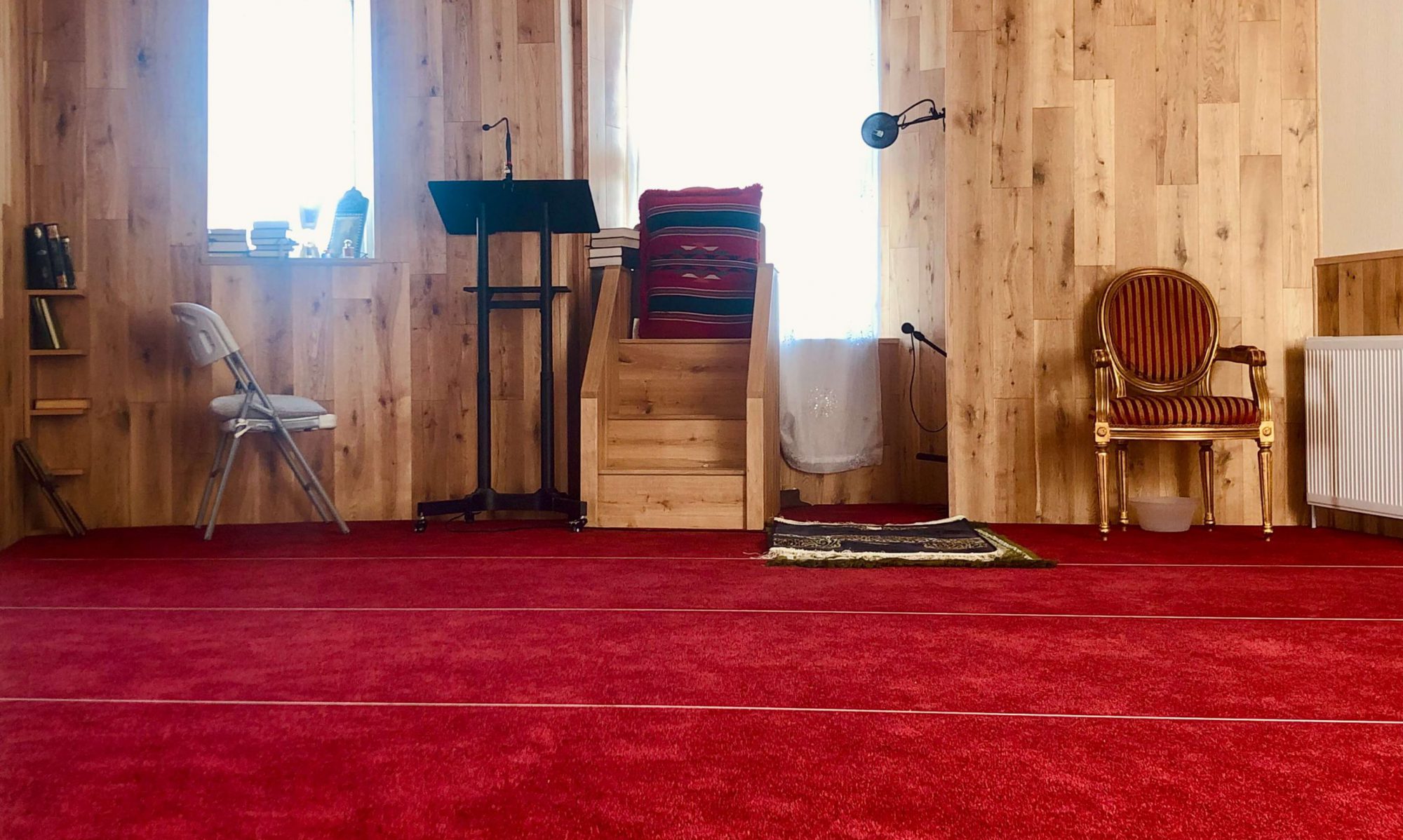Written by Noorislam Uddin (MArch)
أَيْنَمَا تَكُونُوا۟ يُدْرِككُّمُ ٱلْمَوْتُ وَلَوْ كُنتُمْ فِى بُرُوجٍۢ مُّشَيَّدَةٍۢ
[Quran 4:78…]
Ànamá takúnúa yudrikkkumu almautu walau kuńtum fie burújiņ mmuṡayyadaḧiņ…
Sometimes speaking makes the tongue tired. Given all the various sounds this fleshy set of muscles works to produce, we can all excuse a shortcut being made once in a while. Try saying for example, ‘Good day‘. Even in this simple greeting, you perhaps did not pronounce everything, fusing the two ‘d‘ letters into something like ‘goo-d-ay‘.
This merging of identical or even similar letters is a characteristic of speech that transcends any specific language, which in Quran recitation, is ìdgóm ul’ám ‘general fusion’. There are also instances of such found with the N-pause, though those are separated from this lesson set due to its more extensive nature (also see lesson 3.a Fused N-pause). While this principle is often overlooked as a rarity in Quran recitation, it is certainly noticeable when the fusions are not made at the right time, and should therefore be acknowledged where they arise by those serious about the thorough enhancement of their recitals.
There are 2 forms of ídgōm ull’ām general fusion explained below:
- Identical general fusion (Ídgōm ull’ām ulmutamāṫil)
- Similar general fusion (Ídgōm ull’ām ulmutajānis)
6.a) Identical general fusion (Ídgōm ull’ām ulmutamāṫil)
Priority: Recommended
This type of fusion is easy to recognise. It occurs when two of the same consonant letters appear side-by-side. This means that the first of these letters has a sukūn pause on it, as it would otherwise be separated from the next letter by a vowel. In these cases, the letters are fused in a way that sounds just as if the first letter has dissappeared, and the second letter has become a shaddaḧ double letter. The two ‘identical’ letters can be within the same word, or across two words separated by a space.
E.g.
أَيْنَمَا تَكُونُوا۟ يُدْرِككُّمُ ٱلْمَوْتُ وَلَوْ كُنتُمْ فِى بُرُوجٍۢ مُّشَيَّدَةٍۢ
[Quran 4:78…]
Áinamā takūnūa yudrikkkumu almautu walau kuṅtum fie burūjiṇ ṃmuṡayyadaḧiṇ…
وَمَن قُتِلَ مَظْلُومًۭا فَقَدْ جَعَلْنَا لِوَلِيِّهِۦ سُلْطَـٰنًۭا فَلَا يُسْرِف فِّى ٱلْقَتْلِ
[Quran 17:…33…]
…Wamaṅ qutila maṿlūmaṅa faqod ja’alnā liwaliyyihï sulṭönaṅa falā yusrif ffie alqotli…
وَتَرَى ٱلشَّمْسَ إِذَا طَلَعَت تَّزَٰوَرُ عَن كَهْفِهِمْ ذَاتَ ٱلْيَمِينِ وَإِذَا غَرَبَت تَّقْرِضُهُمْ ذَاتَ ٱلشِّمَالِ وَهُمْ فِى فَجْوَةٍۢ مِّنْهُ
[Quran 18:17…]
Wataroe alṡṡamsa ívā ṭola’at ttazäwaru ‘aṅ kahfihim vāta alyamīni waívā gorobat ttaqriḍuhum vāta alṡṡimāli wahum fie fajwaẗiṇ ṃminhu…
6.b) Similar general fusion (Ídgōm ull’ām ulmutajānis)
Priority: Recommended
Summary: These instances of fusion are few enough in the Quran to be memorised case-by-case. They occur when two nearly identical consonant letters appear side-by-side. This means that the first of these letters has a sukūn pause on it, as it would otherwise be separated from the next letter by a vowel. The letters can be different either by their macōrij ‘exit points’ from the mouth, or by their vowel ṣifāt ‘characteristic’ (also see lesson set 1. Heaviness). Excluding the instances found with N-pause, the ‘similar’ letter pairs that should be fused are [ ـد ] Dāl followed with [ تـ ] Tâ; [ ـت ] Tâ followed with [ د ] Dāl; [ ـذ ] Vāl followed with [ ظـ ] Ṿô; [ ـت ] Tā followed with [ طـ ] Ṭô; [ ـل ] Lām followed with [ ر ] Rô; [ ـب ] Bâ followed with [ مـ ] Mīm; [ ـق ] Qōf followed with [ كـ ] Kāf; and [ ـث ] Ṫâ followed with [ ذ ] Vāl. In these pairings, the letters are fused in a way that sounds just as if the first letter has disappeared, and the second letter has become a shaddaḧ double letter. Two letters of a pair can be within the same word, or across two words separated by a space.
Notes:
- • There is one letter pair that undergoes only a partial fusion. If [ ـط ] Ṭô is followed by [ تـ ] Tâ; the resulting sound is a hybrid equally between the two, for example, in [ فَرَّطتُمْ ] farroṭtum. No qolqolaḧ plosion should be heard after the first Ṭô (ṭ) in such cases.
E.g.
وَدَّت طَّآئِفَةٌۭ مِّنْ أَهْلِ ٱلْكِتَـٰبِ لَوْ يُضِلُّونَكُمْ وَمَا يُضِلُّونَ إِلَّآ أَنفُسَهُمْ وَمَا يَشْعُرُونَ
[Quran 3:69]
Waddat ṭṭõífaẗuṇ ṃmin Áhli alKitäbi lau yuḍillūnakum wamā yuḍillūna íllã áṅfusahum wamā yaṡ’urūna
أَلَمْ نَخْلُقكُّم مِّن مَّآءٍۢ مَّهِينٍۢ
[Quran 77:20]
Álam nacluqkkuṃ ṃmiṇ ṃmã-iṇ ṃmahīniṅ
وَهِىَ تَجْرِى بِهِمْ فِى مَوْجٍۢ كَٱلْجِبَالِ وَنَادَىٰ نُوحٌ ٱبْنَهُۥ وَكَانَ فِى مَعْزِلٍۢ يَـٰبُنَىَّ ٱرْكَب مَّعَنَا وَلَا تَكُن مَّعَ ٱلْكَـٰفِرِينَ
[Quran 11:42]
Wahiya tajrie bihim fie maujiṅ kaaljibāli wanādaë Nūḥun abnahü wakāna fie ma’ziliṇ yäbunayya arkab ṃma’anā walā takuṇ ṃma’a alkäfirīna
Allah knows best.
Last updated:
Further tajwíd enhancement study:
- Arabic 101 [Last Updated November 10, 2023], The BEST 30-day Tajweed Program (Intermediate). https://www.youtube.com/playlist?list=PL6TlMIZ5ylgoA27YCmZYMCQCX7EUkfyHp.
- Tajweed.me [February 13, 2013], Tajweed Me All for Quran and Tajweed. https://tajweed.me/tag/tajweed-rules.
- Getquranic.com [November 1, 2021], A Quick Guide to Tajweed. https://www.getquranic.com/a-quick-guide-to-tajweed/#Ikhfaa_to_hide.
Jazak-Allah for reading. All knowledge, opinions, and translations expressed in our articles are the earnest study and reflections of the writer, prioritising honest interpretations of the Quran and authentic Hadith as evidence. We ask for forgiveness for presenting any information that comes to be incorrect or misleading, and accept that Allah is the Most-Knowing One.
